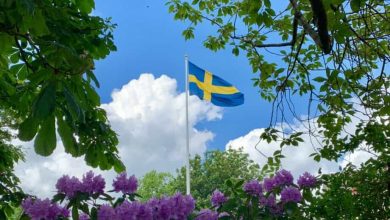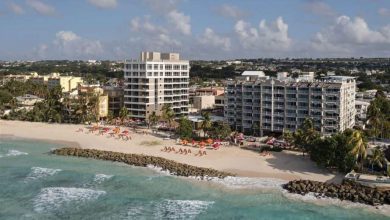10 fascinating places that tourists cannot visit
/ 2023-02-01 09:38:15
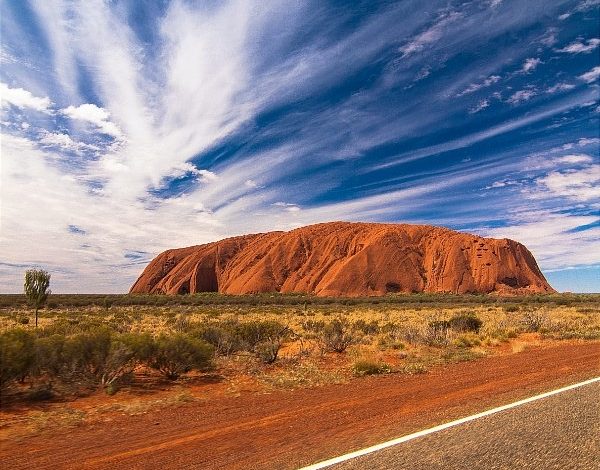
Diplomat.Today
Paul Johnson
2023-02-01 09:38:15
——————————————-
By Paul Johnson on February 01, 2023 in Asia, Attractions, Australia, Brazil, China, Europe, France, Going Out, Iceland, India, Japan, New Mexico, New York, North America, Norway, Oceania, Regions, South America, USA, Western Europe, Worldwide
There are many interesting places in the world that are inaccessible to tourists and travelers. These places may be restricted for a variety of reasons, including political tensions, cultural considerations, or environmental concerns. Despite their inaccessibility, they continue to fascinate many people and are often shrouded in mystery and intrigue. This article takes a look at 10 of the most interesting places in the world that are currently closed to visitors.
Uluru, Australia
Uluru, also known as Ayers Rock, is a large sandstone rock formation in the heart of Australia’s outback. It is considered a sacred place by the indigenous Anangu people and holds great spiritual significance to them. Uluru is a popular tourist destination, attracting millions of visitors each year who come to see the rock and learn about its cultural and spiritual importance.
However, despite its popularity, Uluru is currently off limits to tourists. In October 2019, Uluru-Kata Tjuta National Park announced it would close the rock to climbers from October 26, 2019, to respect the cultural and spiritual significance of the site. This decision received both support and criticism, with some claiming it was a necessary step to protect the sacred site, while others argued it would have a negative effect on tourism in the area. Despite the controversy, the ban on climbing Uluru remains in place and tourists are currently not allowed to visit the rock.
Caves of Lascaux, France
The Lascaux Caves are a series of underground caverns in southwest France that are home to some of the most famous and best-preserved cave paintings in the world. Dating back to the Upper Paleolithic period, these paintings depict a variety of animals and figures and are believed to have been created by the ancient Cro-Magnon people. The Lascaux Caves are a UNESCO World Heritage Site and are considered a priceless cultural and artistic treasure.
Despite their importance, the Lascaux caves cannot currently be visited by tourists. The caves were closed to the public in 1963 due to concerns about the impact of tourism on the fragile paintings and cave environment. While a replica of the caves, known as the Lascaux II, opened to the public in 1983, it has not been possible to visit the original Lascaux caves since their closure. Efforts have been made in recent years to develop new technologies that allow visitors to experience the caves in a more sustainable way, but it is currently not possible to visit the Lascaux Caves in person.
Ise Grand Shrine, Japan
The Ise Grand Shrine, also known as the Ise Jingu, is a Shinto shrine located in the town of Ise in Mie Prefecture, Japan. Considered one of the most important and sacred places in Japan, it is dedicated to the sun goddess Amaterasu Omikami, who is considered the tutelary deity of Japan and the Imperial Family.
Despite its popularity, the Ise Grand Shrine is not open to tourists. The shrine is considered a sacred site and is open only to practicing members of the Shinto religion. Visitors are not allowed to enter the sanctuary’s inner sanctuaries, which are reserved for religious ceremonies and rituals. However, visitors are allowed to walk around the outer parts of the shrine and view the buildings from a distance. Despite its inaccessibility, the Ise Grand Shrine remains a popular tourist destination and a symbol of Japan’s cultural and spiritual heritage.
North Brother Island, USA
North Brother Island is a small, uninhabited island located in the East River between the boroughs of the Bronx and Riker’s Island in New York City. The island has a rich history and has been used for various purposes over the years, including as a quarantine hospital, drug rehabilitation center and home for tuberculosis patients.
Despite its interesting history and location in the heart of New York City, North Brother Island is currently off limits to tourists. The island has been abandoned for decades and not open to the public. It is currently operated by the New York City Department of Parks and Recreation as a bird sanctuary and access is restricted to authorized personnel only.
IMPORTANT ANNOUNCEMENT:
If you are reading this article anywhere other than A Luxury Travel Blog, chances are this content has been stolen without permission.
Please note the web address above and contact A Luxury Travel Blog to notify them of this issue.
Thank you for helping us fight content theft.
Tomb of Qin Shi Huang, China
The Tomb of Qin Shi Huang is a mausoleum in Lintong District, Xi’an, China. It is the burial place of Qin Shi Huang, the first emperor of China, who is best known for uniting the country and building the Great Wall of China. The tomb is located in the Mausoleum of the First Qin Emperor, a complex that also includes the Terracotta Army, a collection of more than 8,000 life-size terracotta statues of soldiers, horses, and other figures.
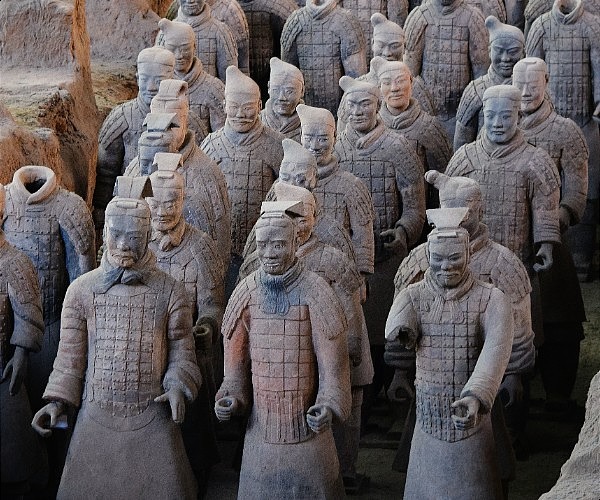
Despite its historical and cultural significance, it is not accessible to tourists. The tomb has never been opened and is believed to contain a number of valuable artifacts and treasures. The Chinese government has chosen to keep the tomb sealed to preserve its contents and protect them from theft or damage. However, visitors to the Mausoleum of the First Qin Emperor can view the Terracotta Army and learn more about the tomb and its history.
North Sentinel Island, India
North Sentinel Island is a small, isolated island in the Bay of Bengal in India. It is home to the Sentinelese, a tribe of indigenous peoples who have lived on the island for thousands of years. The Sentinelese are one of the last remaining uncontacted tribes in the world and they have a long history of resisting contact with outsiders.
Due to the sensitivity of the Sentinelese culture and the potential risk to both the tribe and outsiders, North Sentinel Island is off limits to tourists. The Indian government has established a three-mile exclusion zone around the island and strictly prohibits any contact with the Sentinelese. There have been a number of attempts to contact the Sentinelese in recent years, including by outsiders who have attempted to visit the island, but all have been met with hostility and violence. The Indian government has made it clear that it will not allow any further attempts to contact the Sentinelese and that the island will remain off limits to outsiders in order to protect the tribe’s way of life.
Ilha da Queimada, Brazil
Ilha da Queimada, also known as Snake Island, is a small, uninhabited island off the coast of Brazil in the Atlantic Ocean. The island is home to a number of venomous snakes, including the Golden Lancehead Viper, one of the most venomous snakes in the world. The snakes on the island are so dangerous that the Brazilian government has declared the island off limits to tourists.
Despite its inaccessibility, Ilha da Queimada remains a fascinating and mysterious place. The island’s snake population is believed to have evolved in isolation, and the Golden Lancehead Viper is found nowhere else in the world. The island’s snakes are so venomous that they can melt the flesh around their bite marks, leading to the island’s ominous nickname. Although it is not possible to visit the island, it remains a source of fascination for many people interested in its unique fauna and isolated ecosystem.
Surtsey Island, Iceland
Surtsey Island is a small, uninhabited island off the south coast of Iceland. The island was created in 1963 when a volcanic eruption created a new island out of the sea. Surtsey Island is a unique and fragile ecosystem and is considered a valuable scientific resource.
Due to the importance of Surtsey Island’s ecosystem and the potential impact of tourism on the island, it is not currently open to visitors. Access to the island is tightly controlled by the Icelandic government and only a small number of scientists are allowed to visit the island each year. The purpose of these visits is to study the island’s ecosystem and understand how it changes over time. Although it is not possible for tourists to visit Surtsey Island, it remains a fascinating and mysterious place of great interest to scientists and nature lovers.
Dulce Base, USA
Dulce Base is a rumored underground military facility in Dulce, New Mexico. The existence of the base has been the subject of much speculation and conspiracy theories, with some people believing it to be a secret government research facility involved in a variety of activities, including the development of advanced technologies and the study of extraterrestrial life.
Despite the intrigue surrounding Dulce Base, it is not open to tourists. The base is said to be very secure and access is restricted to authorized personnel only. While there is no official confirmation of the base’s existence, it remains a source of fascination for many people interested in conspiracy theories and the possibility of secret government programs. Despite its inaccessibility, Dulce Base remains a subject of debate and speculation, with many people wondering what secrets it might be hiding.
Svalbard Global Seed Vault, Spitsbergen
The Svalbard Global Seed Vault is a secure underground facility on the Norwegian island of Spitsbergen in the Arctic Circle. The vault was established in 2008 as a way to preserve the world’s plant diversity and ensure that seeds can be preserved for future use. It is managed by the Norwegian government and funded by a number of organizations, including the Global Crop Diversity Trust and the Nordic Genetic Resource Center.
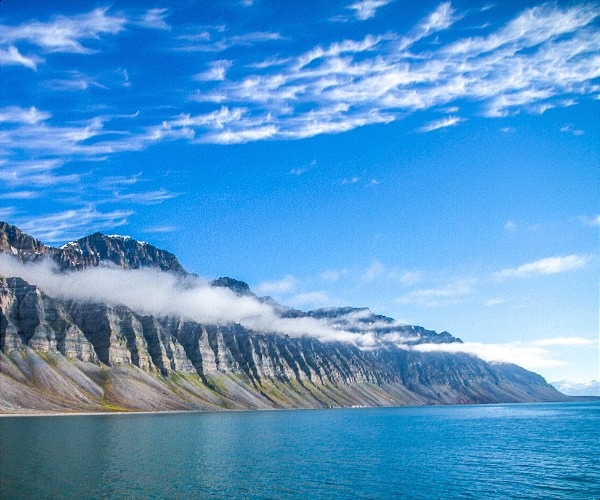
Despite its importance, the Svalbard Global Seed Vault is not open to tourists. Access to the facility is restricted to authorized personnel only and it is not possible for the general public to visit. Although the vault is not open to visitors, it has attracted a great deal of attention from the media and the public, with many people interested in its role in preserving the world’s plant diversity. Despite its inaccessibility, the Svalbard Global Seed Vault remains an essential resource for scientists and researchers working to protect the world’s plant life.
——————————————-

